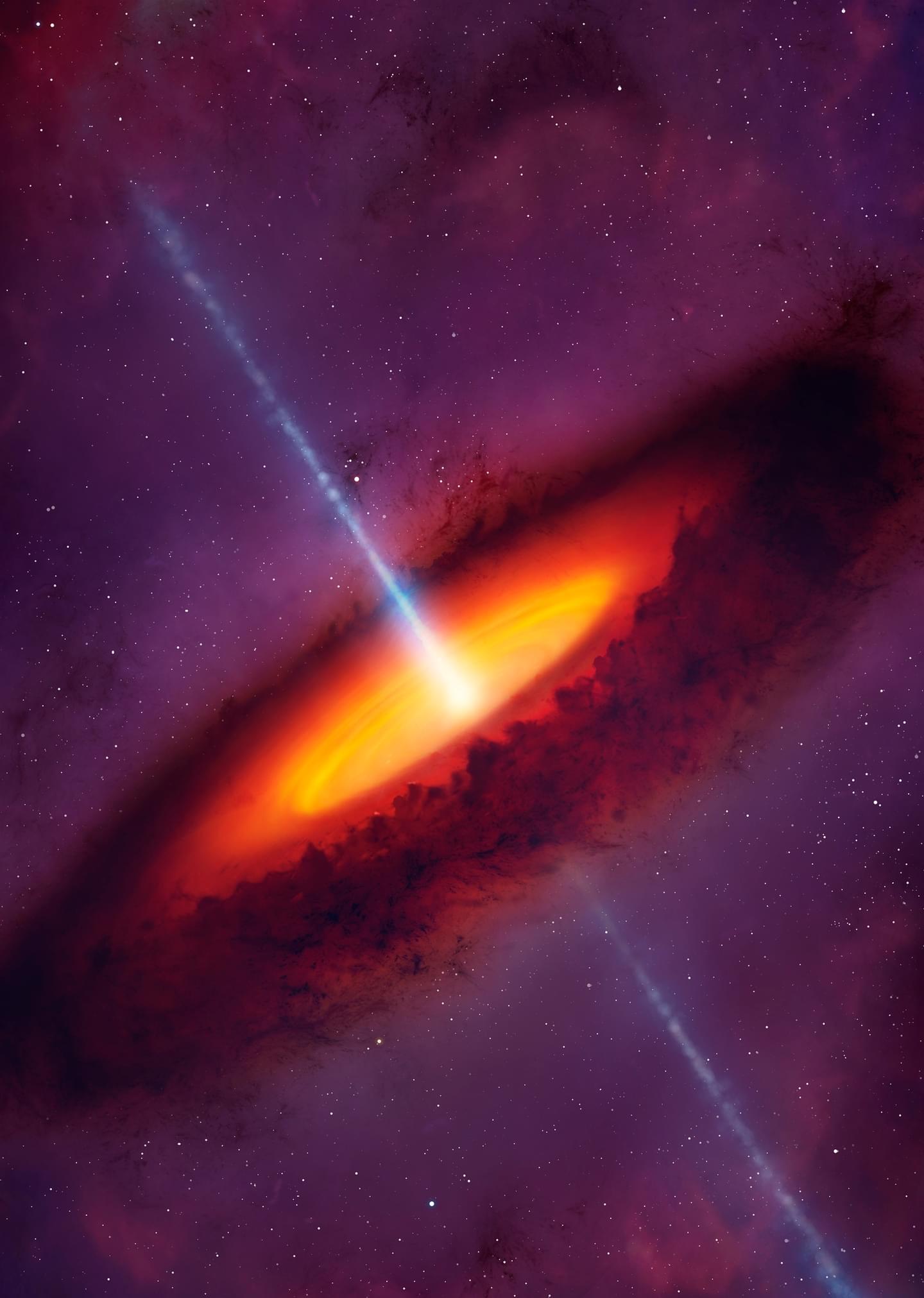Satya Nadella talks with NVIDIA CEO Jensen Huang at Microsoft Build 2025.Subscribe to Microsoft on YouTube here: https://aka.ms/SubscribeToYouTubeFollow us o…
Get the latest international news and world events from around the world.


“China’s Quantum Leap Unveiled”: New Quantum Processor Operates 1 Quadrillion Times Faster Than Top Supercomputers, Rivalling Google’s Willow Chip
IN A NUTSHELL 🚀 Chinese scientists have developed the Zuchongzhi 3.0 quantum processor, which is significantly faster than the world’s top supercomputers. 🔍 The processor features 105 superconducting qubits and demonstrates unprecedented speed, completing tasks in seconds that would take traditional supercomputers billions of years. 💡 With enhanced coherence time, gate fidelity, and error correction.

Photon transport through the entire adult human head
SignificanceThe highly scattering nature of near-infrared light in human tissue makes it challenging to collect photons using source-detector separations larger than several centimeters. The limits of detectability of light transmitted through the head remain unknown. Detecting photons in the extreme case through an entire adult head explores the limits of photon transport in the brain. AimWe explore the physical limits of photon transport in the head in the extreme case wherein the source and detector are diametrically opposite. ApproachSimulations uncover possible migration pathways of photons from source to detector. We compare simulations with time-resolved photon counting experiments that measure pulsed light transmitted through the head. ResultsWe observe good agreement between the peak delay time and width of the time-correlated histograms in experiments and simulations. Analysis of the photon migration pathways indicates sensitivity to regions of the brain well beyond accepted limits. Source repositioning can isolate sensitivity to targeted regions of the brain, including under the cerebrum. ConclusionsWe overcome attenuation of ∼1018 and detect photons transmitted through an entire adult human head for a subject with fair skin and no hair. Photons measured in this regime explore regions of the brain currently inaccessible with noninvasive optical brain imaging.

Aging on Chip: Harnessing the Potential of Microfluidic Technologies in Aging and Rejuvenation Research
Alternative models for studying aging have employed unicellular organisms such as the budding yeast Saccharomyces cerevisiae. Studying replicative aging in yeast has revealed insights into evolutionarily conserved enzymes and pathways regulating aging[ 12-14 ] as well as potential interventions for mitigating its effects.[ 15 ] However, traditional yeast lifespan analysis on agar plates and manual separation cannot track molecular markers and yeast biology differs from humans.[ 16 ]
Animal models, including nematodes, flies, and rodents, play a vital role in aging research due to their shorter lifespans and genetic manipulability, making them useful for mimicking human aging phenotypes.[ 17 ] These models have provided many insights into the fundamental understanding of aging mechanism. However, animal models come with several limitations when applied to human aging and age-related diseases. Key issues include limited generalizability due to species-specific differences in disease manifestation and physiological traits. For example, animal models often exhibit physiological differences, age at different rates, and may not fully replicate human conditions like cardiovascular disease,[ 18 ] immune response,[ 19 ] neurodegenerative diseases,[ 20 ] and drug metabolism.[ 21 ] Furthermore, in vivo models, such as rodents and non-human primates, suffer from limitations such as high costs, low throughput, ethical concerns, and physiological differences compared to humans. The use of shorter lifespan or accelerated aging models, along with the absence of long-term longitudinal data, can further distort the natural aging process and hinder our understanding of aging in humans. Additionally, many animal models rely on inbred strains, which lack genetic diversity and may not fully represent evolutionary complexity.[ 22 ]
In recent years, microfluidics has emerged as a promising tool for studying aging, offering of physiologically relevant 3D environments with high-throughput capabilities that surpass the limitations of traditional 2D cultures and bridge the gap between animal models and human As a multidisciplinary technology, microfluidics processes or manipulates small volumes of fluids (from pico to microliters) within channels measuring 10–1000 µm.[ 23 ] Traditional fabrication methods, such as photolithography and soft lithography, particularly using polydimethylsiloxane (PDMS), remain widely used due to their cost-effectiveness and biocompatibility. However, newer approaches, including 3D printing, injection molding, and laser micromachining, offer greater flexibility for rapid prototyping and the creation of complex architectures. Design considerations are equally critical and are tailored to the specific application, focusing on parameters such as channel geometry, fluid dynamics, material properties, and the integration of on-chip components like valves, sensors, and actuators. A comprehensive overview of the design and fabrication of microphysiological systems is beyond the scope of this review; readers are referred to existing reviews for further detail.[ 24-26 ] Microfluidic devices offer numerous advantages, including reduced resource consumption and costs, shorter culture times, and improved simulation of pathophysiological conditions in 3D cellular systems compared to other model systems (Figure 1).[ 27 ] Therefore, microfluidics platforms have been extensively employed in various domains of life science research, such as developmental biology, disease modeling, drug discovery, and clinical applications,[ 28 ] positioning this technology as a significant avenue in the field of aging research.

‘Black hole bomb’ discovery could trigger potential ‘catastrophic’ disaster if it ever detonated
The AI bot explained: If a black hole bomb were somehow constructed and detonated, the energy release could be comparable to that of a supernova, one of the most powerful explosions in the universe. Such an event would release vast amounts of radiation and could have devastating effects on its surroundings.
Forget Facehuggers… Meet T. Ocellus: The Alien Franchise’s New NIGHTMARE Explained
Weyland-Yutani’s latest bio-weapon isn’t a Facehugger — it’s something far worse. T. Ocellus doesn’t kill… it takes control. Discover the terrifying truth behind the Alien franchise’s newest nightmare.
#alienearth #scifihorror #TOcellus.
🔔 Subscribe for more deep dives into sci-fi, horror, and gaming lore!
Boston Dynamics robots dance to ‘Don’t Stop Me Now’ for ‘America’s Got Talent’ audition
A dance crew of four-legged robots from Boston Dynamics appeared on “America’s Got Talent” to perform a synchronized routine to Queen’s “Don’t Stop Me Now.”
Their performance was impressive enough to earn four “yes” votes from the judges — but one of the five robots experienced some stage fright, perhaps, and shut down in the middle of the routine. But the show must go on, so nevertheless, the four other robots persisted.
“Can I be honest with you?” judge Simon Cowell asked at the conclusion of their performance. “I don’t mean this in a cruel way. It was weirdly better that one of them died… because it showed how difficult this was.”


Apple’s Liquid Glass design is paving the way for AR glasses
At Apple’s WWDC 2025 event, the company announced its most dramatic software design change in over a decade: Liquid Glass. This visual overhaul gives us a glimpse into what might be coming in Apple’s rumored AR glasses, which will reportedly debut next year.
Users are connecting Liquid Glass to potential AR glasses because the new design draws strong inspiration from that of Apple’s Vision Pro VR headset.
Liquid Glass is named with the idea that each window on a phone is like a pane of glass, see-through and somewhat reflective. It gives the screen a sleeker look, though in its developer beta, Apple hasn’t quite worked out the kinks of playing with opacity.